
First and foremost: snakes survive longer in captivity than in the wild.
In the wild, a snake is exposed to predators. Birds and other animals are always looking for a meal.
They are especially vulnerable when they are little and unable to recognize danger or defend themselves. Snakes often become food when they are mere hatchlings.
Once they have grown, they get much better at sensing danger and hiding to avoid it.
Some snakes, like a python or a cobra, can defend themselves. Others have no recourse but to run away and hide.
There are about 3000 species of snakes in the world. Each snake has a different lifespan, depending on its size, living conditions, and ability to survive, both in the wild and in captivity.
Table of Contents
- 1 How Long Do Snakes Live?
- 2 How Long Do Snakes Live In The Wild?
- 3 How Long Do Snakes Live In Captivity?
- 4 How Long Do Snakes Live Without Food
- 5 How Long Do Snakes Live Without A Head
- 6 How Long Can A Snake Live In The Cold?
- 7 What Snakes Live The Longest?
- 8 Related Questions
- 9 How Long Snakes Live: Conclusion
How Long Do Snakes Live?
On average, a snake lives for 10 to 15 years in the wild and 13 to 18 years in captivity. It again depends on the type of snake and how big it can grow.
The bigger the snake can grow, the longer it can live. Giant snakes can live 15 to 20 years, while the smaller ones tend to have lifespans of 5 to 10 years.
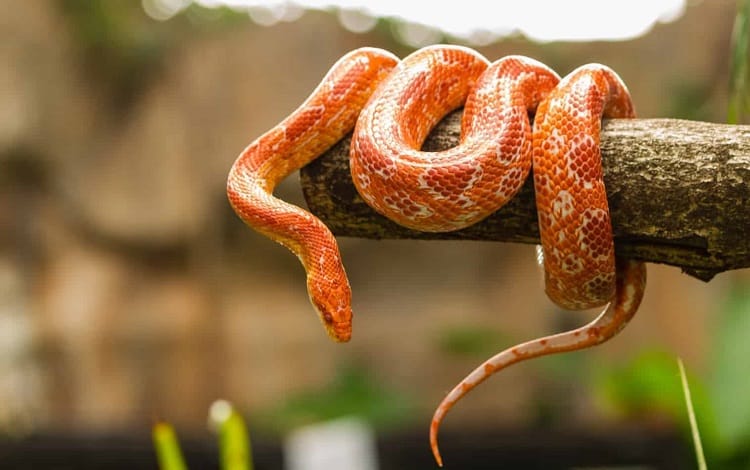
For example, a kingsnake can survive for 7 to 10 years in the wild and 13 to 18 years in captivity, whereas a boa constrictor survives 10 to 15 years in the wild and about 20 to 30 years in captivity.
How long a snake lives also depends on how well they are taken care of while in captivity. It is much harder to survive in the wild than in captivity.
In captivity, they are well cared for. In the forests, jungles, swamps, deserts, etc., they have to fend for themselves.
Snakes in the wild are known to go without food for months on end. Their natural biological system allows them to conserve energy. They rely on their stored body fat in winters or when they cannot hunt.
How Long Do Snakes Live In The Wild?
The wild is a tough place to survive, even for a snake. There are many reasons why it is harder for a snake to survive in the wild.
The number one reason is predators. Climate, lack of food, or injuries can also reduce the lifespan of a snake.
When in captivity, even the slightest infection gets treated by a vet. In the wild, this same infection can last for a long time and can ultimately be fatal.
Different species survive for different periods of time in the wild, depending on the size. The Burmese python, for example, survives for 10 to 15 years in the wild, whereas a hognose survives for 7 to 10 years.
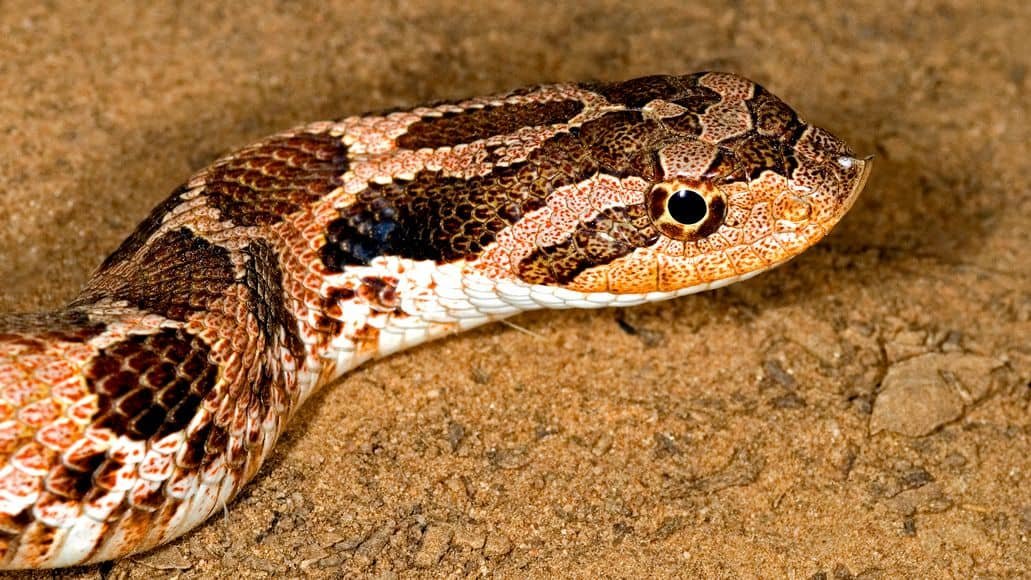
A milk snake is known to live for 7 to 10 years, whereas a corn snake barely lives for 6 to 8 years. A reticulated python has a lifespan of 9 to 14 years in the wild.
Snakes often burrow underground or live on trees. Although some snakes can camouflage themselves well, most of them are attacked due to their bright colors. That is why hiding is usually the best recourse.
How Long Do Snakes Live In Captivity?
When a snake is injured in captivity, it is given immediate treatment. The vet treats its injuries, ailments, or any other issue the snake might have. It is also given a long period to rest and recover.
Plus, the healing takes place in a safe environment free of predators. All these factors strengthen the snake, thus increasing its lifespan.
The wild can be a ruthless place for a snake. An injured snake becomes an easy target for a large number of birds, reptiles, amphibians, and mammals.
That is why they live so much longer in captivity. On average, a snake survives for 13 to 18 years in captivity. The oldest snake in the world lived for 42 years!
Not all snakes can live for that long, but there are a few who do. The Burmese python can live up to 15 to 25 years in captivity, while a green tree python can survive for 15 to 20 years. Both the kingsnake and the milk snake live for 13 to 18 years in captivity.
How Long Do Snakes Live As Pets
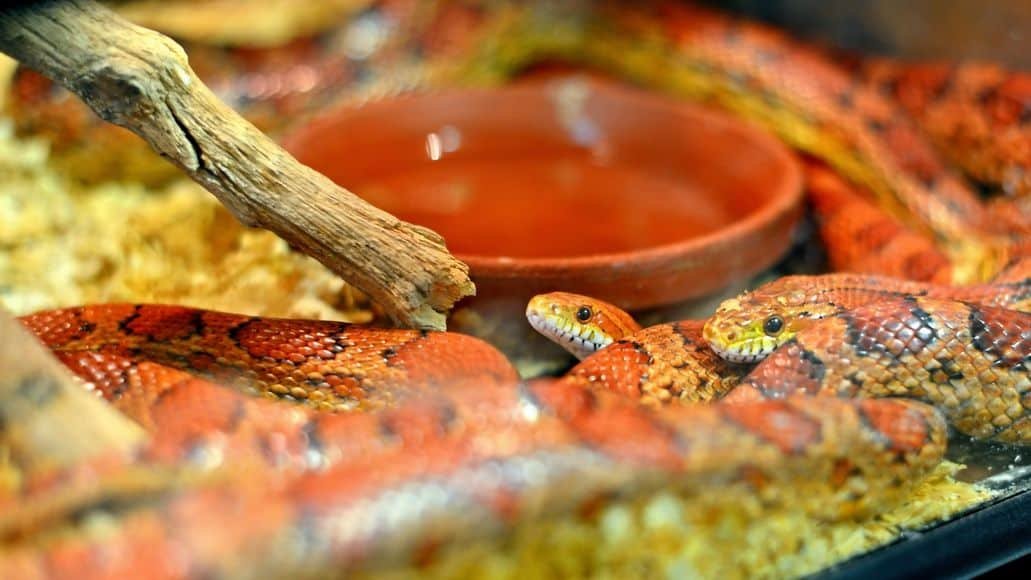
Terrarium snakes can survive for up to 20 to 30 years. Their lifespan also depends on their size and species.
A reticulated python can live for 15 to 20 years in captivity, whereas a ball python can live for 20 to 40 years. With good care and guidance, you can extend the lifespan of a snake.
A few of the most commonly housed snakes are corn snakes, gopher snakes, kingsnakes, ball pythons, corn snakes and garter snakes.
Since they grow up to 4 to 5 feet, it is easy to keep them in a large glass tank. Kingsnakes have a lifespan of 20 years, while ball pythons can survive for up to 40 years.
Make sure you choose a snake that is easy to handle. A smaller snake is a wiser option if you are a beginner. Make sure you take into account how long they live. You need to make sure you are capable of caring for the reptile for the duration.
You must be absolutely prepared and thoroughly trained to keep a snake as a pet. Even though they might be in a cage, they are expert escapers.
How To Ensure A Long Lifespan In Captivity
Just because snakes tend to live longer lives when they’re kept as pets, this doesn’t mean that looking after them is easy. In fact, the mere fact that they live for so long requires you to be very committed to looking after them.
Stress is what tends to kill many snakes in captivity, so it’s important to know how to avoid putting your pet snake under stress.
You should avoid anything that could make your snake uncomfortable. This includes providing the incorrect temperature and humidity levels in their enclosure, as well as crowding them.
Snakes don’t like to be handled or petted and doing so can cause them to become stressed. Avoid this, unless your snake has gotten used to you and has shown that it is fine with handling.
Basically, you want to mimic your snake’s natural environment as much as possible in captivity. That is where they feel comfortable and changing that is what causes them stress.
If you ever notice anything unusual, like your snake having seizures, contact a vet immediately. It is important to catch any possible diseases or disorders as early as you can.
How Long Do Snakes Live Without Food
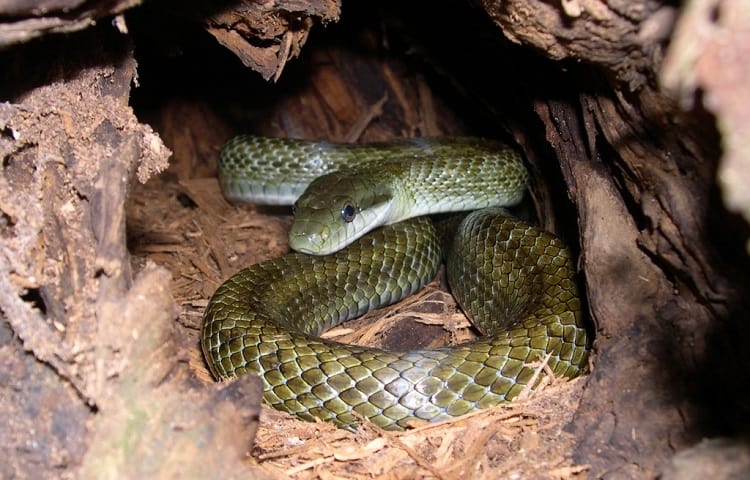
Snakes can go for months without food. Since they can regulate their metabolism, snakes require less food to survive.
They do not need to eat every day. The longest a snake can survive without food is two years. That’s right. Snakes have been known to survive for up to 24 months without food.
On average, snakes are built to survive three months of winter without food. They do this by slowing down their metabolism by 72%, in a process referred to as brumation.
Snakes use fats stored in their body as fuel. Since they are eating no food, their body automatically starts using up conserved energy.
Ball pythons, western diamond rattlesnakes, and rat snakes can go up to 6 months without eating anything.
Snakes are even known to grow in size without food intake. Their system naturally uses body fat to keep them active and alive.
On average, animals start dying when their lipid level falls to 10%. A snake can go on living with a lipid level of 5%. It is built to survive situations where there might be a scarcity of food.
In the wild, a snake hunts, and if it is unable to find prey for a long time, it can quickly lower its metabolism and avoid starvation. Even in captivity, snakes can do this.
If you have a pet snake, you can easily take a short vacation without worrying about feeding it.
How Long Do Snakes Live Without A Head
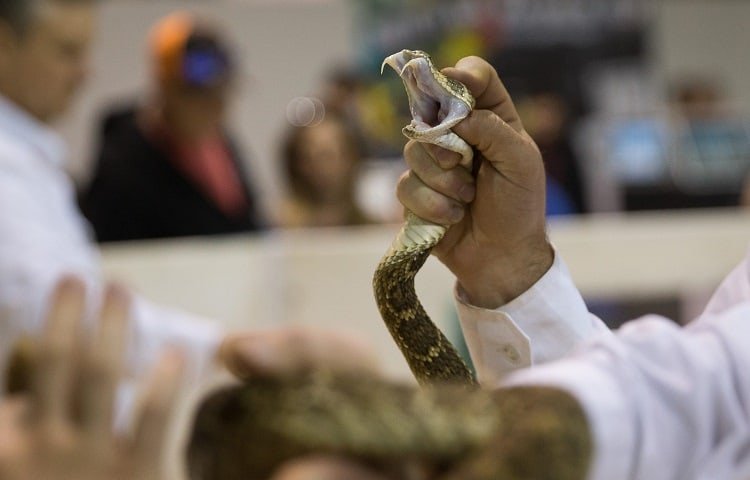
Snakes have a (somewhat undeserved) reputation as deadly creatures. In fact, they can be just as deadly even after their head is severed.
That’s right! A snake can survive up to 20 to 45 minutes without a head. People from all parts of the world have reported snake bites suffered at the hands of a decapitated snake.
One example: a chef in China was preparing cobra soup when he was fatally bitten by a snake’s head. The snake had been dead for 20 minutes when the chef began to use it to make a dish.
Brain activity is present in a snake, even after its head is chopped off. The neurological activity causes sudden reflexes of the mouth. The chef might have put his hand in the snake’s mouth, causing it to attack the chef.
Due to ongoing brain activity, the reflexes of a snake can be active even after it has been decapitated. This reflex is triggered by information passed on to the brain by the mouth cavity.
There have been instances where a snake has elevated its body and was getting ready to attack, all without a head. As creepy as this might be, victims of headless snake attacks will assure you that this does happen.
In one case, after a snake’s head was cut off, it ended up biting its tail. Next time you are around a snake, whether dead or alive, make sure not to put your hand anywhere near its mouth.
How Long Can A Snake Live In The Cold?

If you’ve ever wondered how the cold affects snakes, or why we tend to see fewer snakes when the temperature drops, it’s because of how they go into hiding during the winter.
However, they don’t hibernate. Instead, snakes brumate. This is similar to hibernation, but does not involve continuous sleep.
Snakes sleep and are lethargic during this time, but they can also wake up and find food. Snakes tend to become lethargic when temperatures reach below 60 degrees Fahrenheit.
In captivity, snakes don’t need to enter brumation. This is because their temperature, warmth, and humidity is regulated all year round. It’s up to you to ensure that they have the correct conditions to meet all their needs.
Interestingly, even though snakes can survive for long periods of time without food and water, when it comes to freezing temperatures they’re not as lucky. Snakes are cold-blooded animals that need to have sufficient warmth to regulate their body temperature.
If they are exposed to extremely cold conditions, such as in regions where the ground is frozen for a long period of time, they won’t be able to survive.
What Snakes Live The Longest?
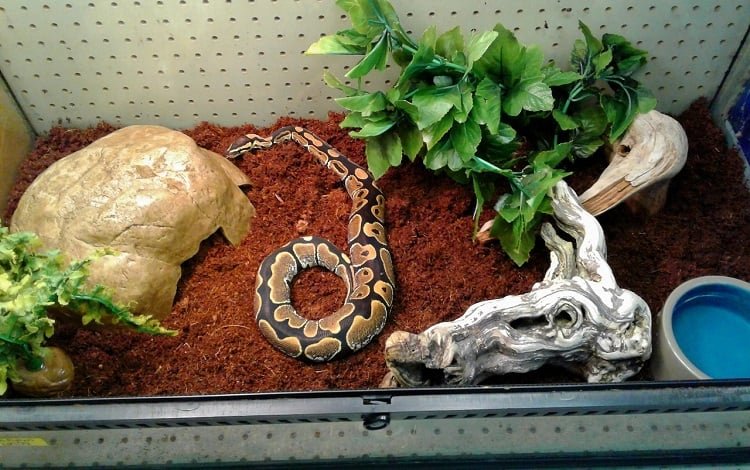
The length of time that a snake lives depends on its species. Some snake species are known to live for much longer than others.
Snakes that live the longest include ball pythons and boa constrictors. They can live up to 30 years. Corn snakes follow quickly behind, with lifespans that can reach up to 25 years.
Other snakes, such as garter snakes, have shorter lifespans – they usually live for between six to 10 years. If you have a pet and it looks like it has died, learn how to recognize if a snake is dead, so you can make sure it is not just sick or sleeping.
Related Questions
Where do snakes hide when they brumate?
Snakes in the wild will look for warm places to pass the winter months. These include dens that have been constructed by other animals, tree stumps, and caves.
In urban areas, snakes can hide in storage spaces, basements, sheds, and other places where they won’t be disturbed.
What’s the oldest snake in captivity?
The oldest snake in captivity was Ben, a Columbian rainbow boa that reached the age of 42! He died in 2016.
How Long Snakes Live: Conclusion
The lifespan of snakes varies greatly. The primary factor affecting how long a snake can live is the environment.
Snakes in captivity live far longer than those in the wild, because their environment is perfectly regulated (in theory…there are bad pet owners who don’t do this and whose snakes do not live long as a result).
The species also plays a role in longevity. Larger snakes tend to live longer than smaller ones, but this is not always the case. The ball python is a small snake that has one of the longest lifespans.
If you are considering a pet snake, make sure you research how long you can expect it to live. You need to be aware how long of a commitment it will be and to be prepared to care for it as long as it lives.
And make sure you provide the ideal environment and otherwise take good care of it. You don’t want to find yourself asking: “Why did my snake die?”
Leave a Reply